Designing Levels Without Custom Assets in UE5
One of the hardest things about trying to make this a professional looking game is having no budget or artists. So as I've been working on assets for our first level this week, I've found a couple tricks to help achieve the desired style you're looking for in your game with limited resources.
Trick 1: Find a reference.
It helps to narrow down and source assets when you have a reference to keep going back to for what you're trying to create. For our team, we knew that we wanted our first level to be a small desert town, so the first thing I did was see what Quixel Bridge had to offer. I find that they have a Utah desert pack, so that narrows down our scope of reference even more. With that inspiration in mind, I find a small desert town in Utah and use it for reference for our pieces.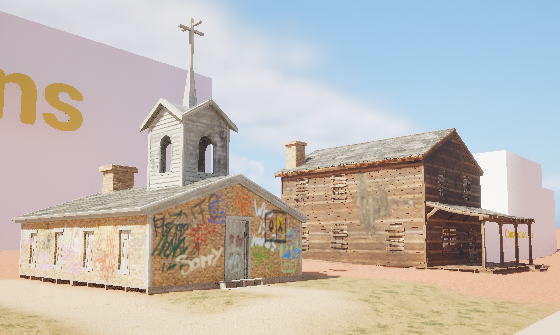
Trick 2: Start with a base.
While every dev team would like to make everything 100% original and from scratch, the truth is that every thing you have to make yourself is time stolen from something else, and so cutting corners and prioritizing some things over others is a necessity. That is why I start with a pre-made asset whenever I can, and just modify it until it fits in my game. Now, you can't do this all the time because then your game would lose all variety, but if it can save you having to lego a building together every once in a while, then it's a good thing. Ex. I took this westerny looking house, removed some of the stilting, added boards on the windows and lots of damage, changed all the materials, and now it looks like a rotting old house in an abandoned town.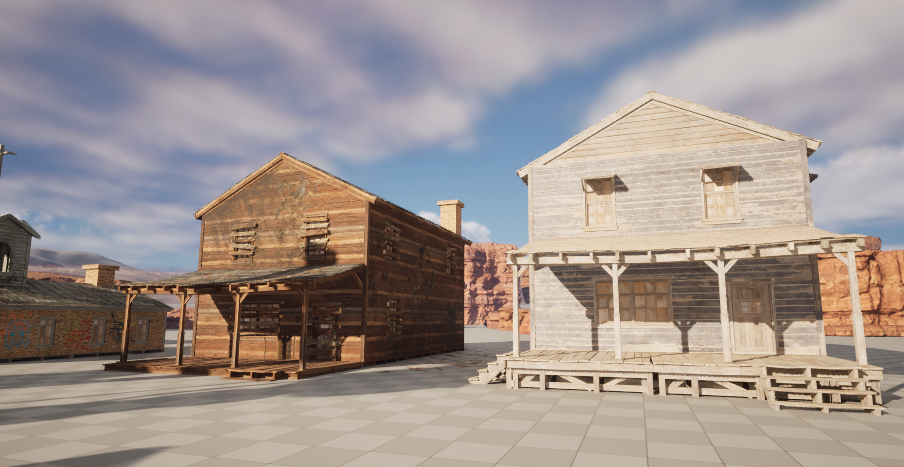
Trick 3: Decals in Unreal are very versatile.
Quixel Bridge has a wide assortment of decals, which are basically stickers that can be put on a surface to layer different effects on it, and these can often be used in multiple ways beyond their original purpose. For example, on the church and wooden house that I made for our level, the grime on the wood is actually decals meant for leaky water damage. The cracks on the windows are concrete and asphalt cracks, just colored black and with flattened normals. The wood damage is splinters and wood trash, and the brick damage is actually plaster damage.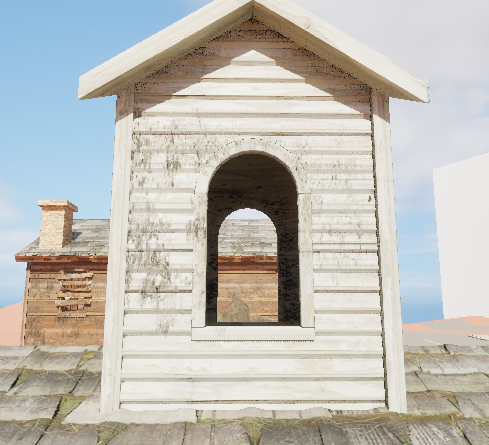
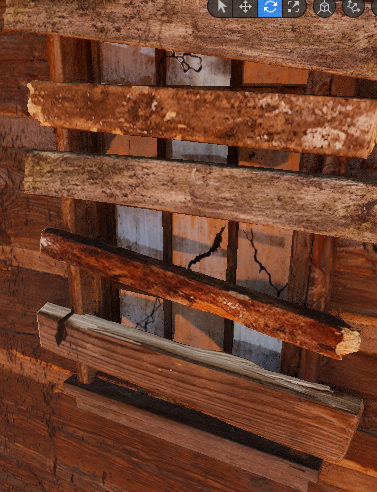
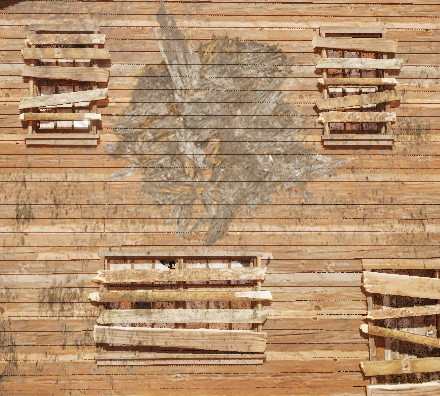
Trick 4: Pack your level actors into a Level Instance or a Packed Level Actor.
A good way to move your constructions between levels and projects and to reuse parts of levels is to save them as Level Instances. You can take this a step further by making this instance a Packed Level Actor, which Unreal can use to render the meshes more efficiently, saving you performance. Unfortunately these Packed Level Actors have a major drawback in the sense that they can only contain static meshes. This means no logic and no decals, for starters. However, if you are a larger studio with a budget and artists who can model the style you're going for directly into the static meshes, then your levels can be much larger and more detailed while maintaining good performance.
Plague Wardens
Obliterate for your country.
| Status | Prototype |
| Author | Board Gamers |
| Genre | Shooter, Action |
| Tags | Action RPG, Bullet Hell, Co-op, horor, pve, Third-Person Shooter |
More posts
- Spawning Logic Rework - Antonio RoldanNov 18, 2024
- Surrounding Behavior Improvements - Antonio RoldanNov 08, 2024
- AI Surrounding Behavior - Antonio RoldanNov 01, 2024
- Enemy Balancing - Antonio RoldanOct 23, 2024
- Functional Lobby and More Visual Feedback - Ryan BrownOct 23, 2024
- Network Smoothing - Antonio RoldanOct 18, 2024
- Stratagem Improvements and Menu Additions - Ryan BrownOct 17, 2024
- C++ Conversion - Antonio RoldanOct 16, 2024
- Interactable Visuals and Other Changes - Ryan BrownOct 16, 2024
- AI Optimization - Antonio RoldanOct 05, 2024
Leave a comment
Log in with itch.io to leave a comment.